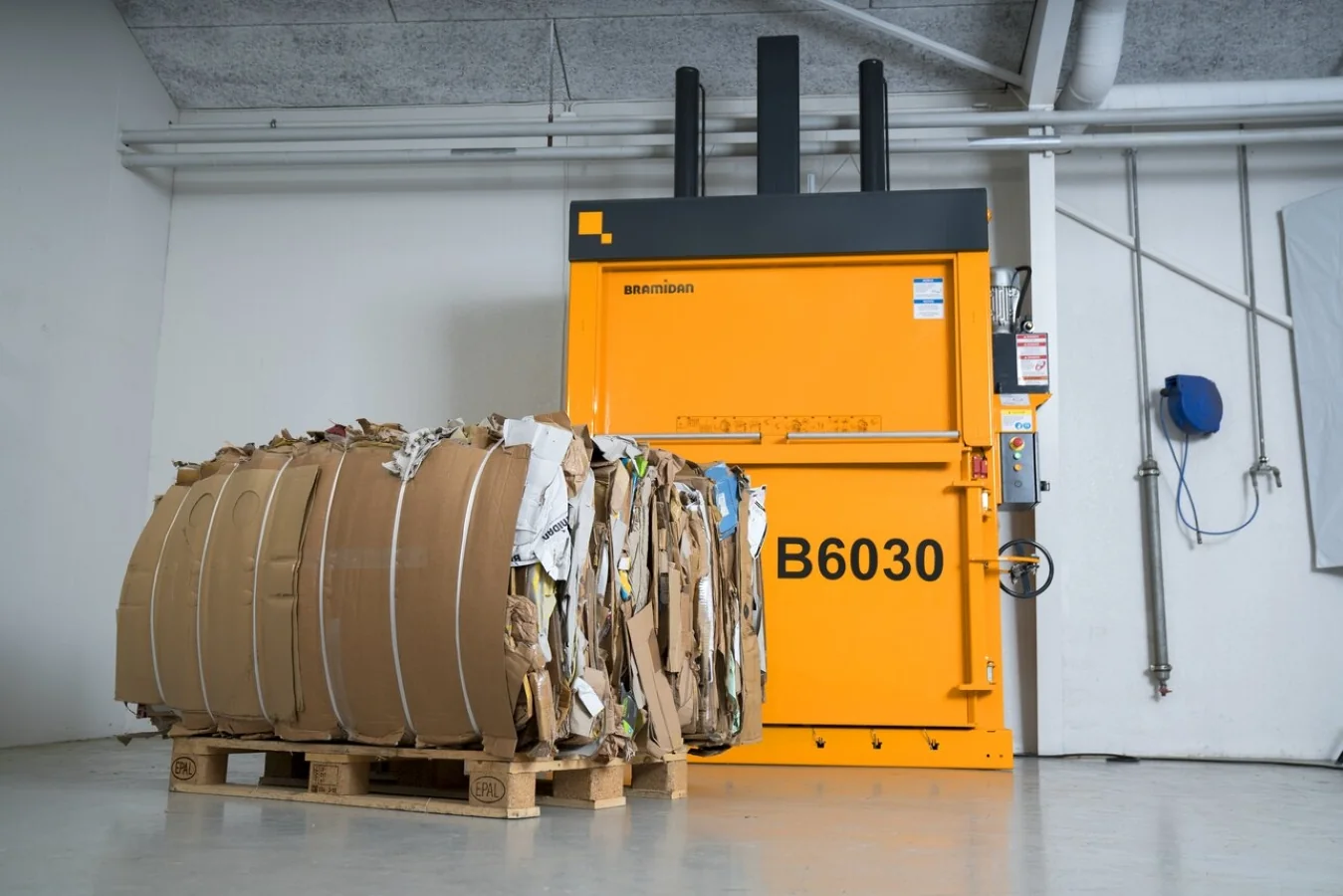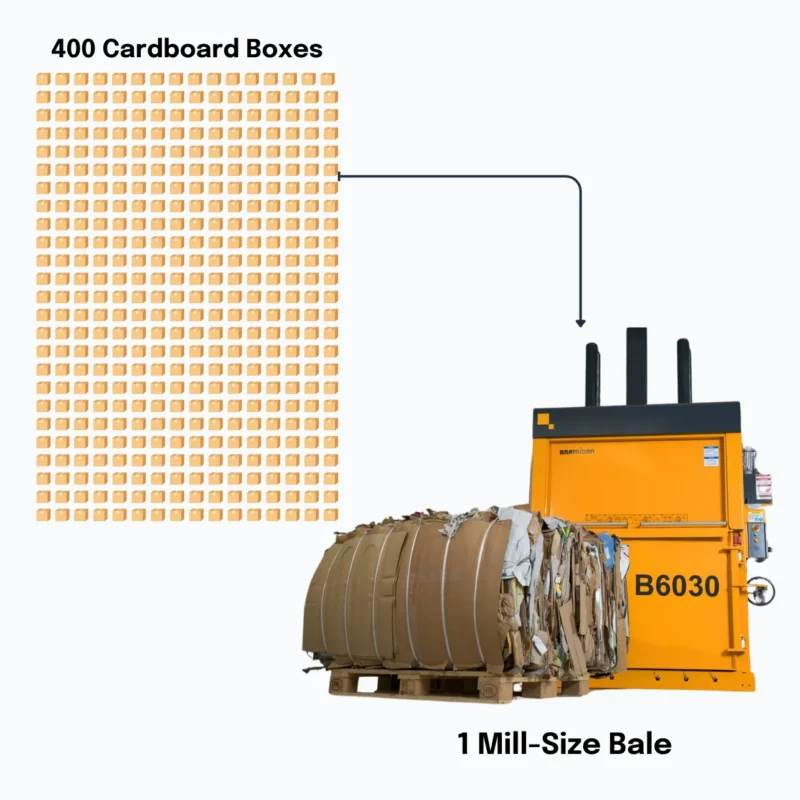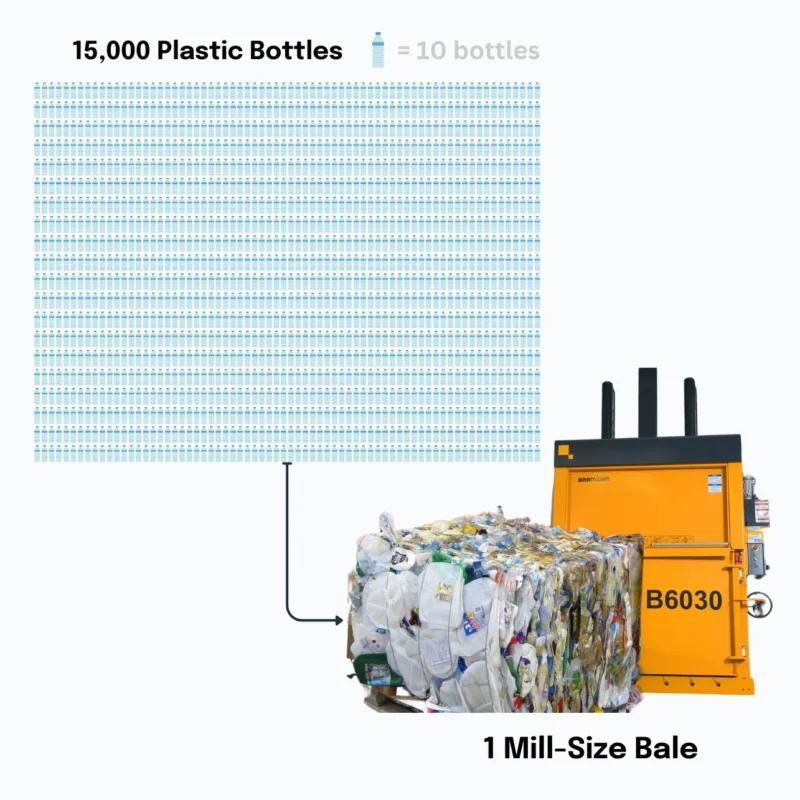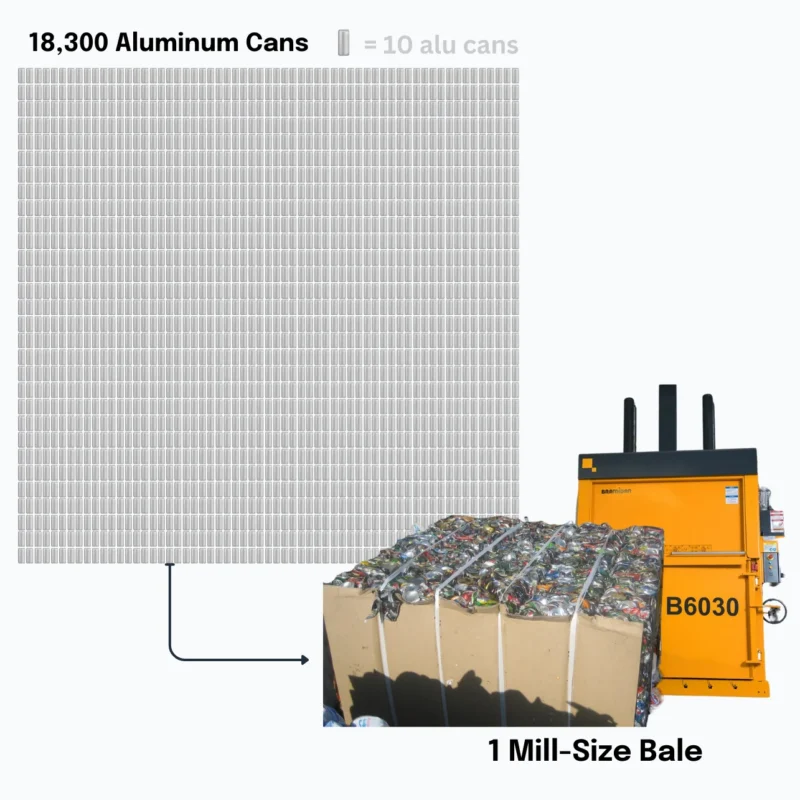How Much Material Is Required to Make a Bale?

How Much Cardboard in a Cardboard Bale?
It can be difficult to grasp the sheer volume of material in a dense, high-quality bale. For large-scale operations, businesses may go through hundreds of pounds of material before realizing they need a baler to compress and compact their common material.
For example, when uncompressed, cardboard boxes take up valuable space in a warehouse or facility, clogging up workflows and introducing safety hazards.
Read More: How To Choose Between a Small and Large Baler
In this article, we’ll break down the quantities required to form one-ton bales of various recyclable materials, including cardboard and plastic foil, using the B6030 vertical baler for reference.
Visualizing A Half-Ton of Cardboard, PET Bottles, and Aluminum.
Cardboard Boxes, Plastic Bottles, and Aluminum Cans are some of the most common recyclable materials processed by Bramidan machinery.
How Many Cardboard Boxes are in a Half-Ton Bale?
Since a medium-sized cardboard box weighs around 2.5 pounds, to create a half-ton bale, you would need approximately 400 cardboard boxes (1,000 pounds / 2.5 pounds per box).

How Many PET Bottle Make Up a Bale?
A PET bale of PET bottles, using the B6030, weighs around 450 lbs, or just under a quarter ton.
Each PET bottle weighs on average 0.03 pounds. So, you need approximately 15,000 bottles to make a bale of PET bottles.

How Many Aluminum Cans Make Up a Bale?
Similar to the bale of PET bottles, The B6030 produces a bale of aluminum that weighs around 550 lbs.
Each can weighs around 0.03 pounds. You need roughly 18,300 cans to make a bale in the B6030.
Read More: Vertical vs. Horizontal Baler

Questions? Contact Us Today



